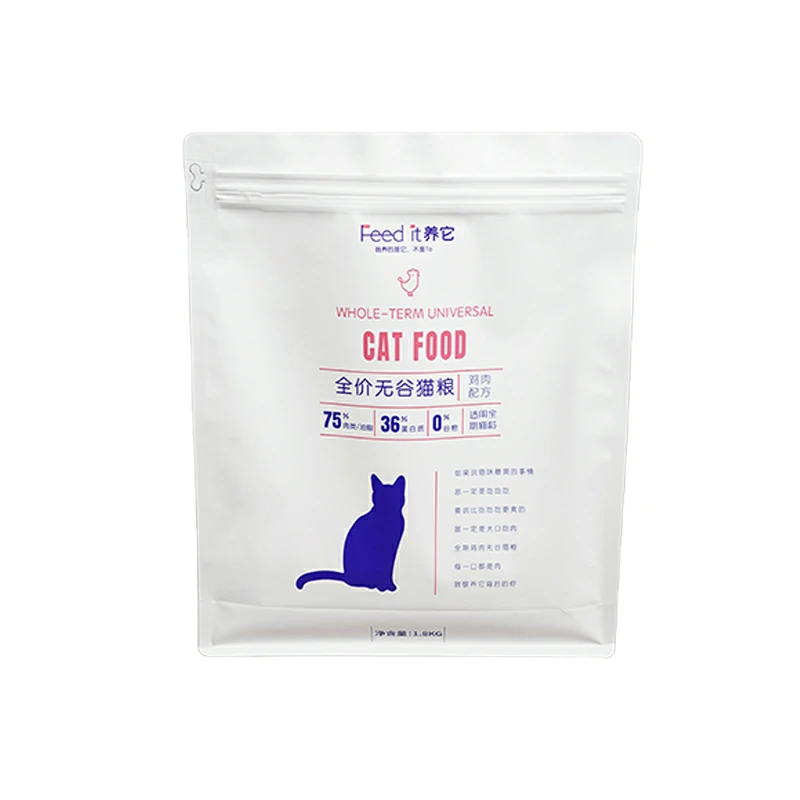Dog snack packaging is tested for resistance to tearing and punctures through various methods and standards to ensure the durability and integrity of the packaging material. These tests help manufacturers assess the packaging’s ability to withstand external forces during handling, transportation, and storage.
Here are common testing methods used for evaluating tear resistance and puncture resistance in dog snack packaging:
- Tear Resistance Testing:
- Elmendorf Tear Test: This test measures the force required to propagate a tear in a specified direction through a pre-cut slit in the material. The Elmendorf tear test is commonly used for flexible packaging materials, including those used for dog snack packaging.
- Graves Tear Resistance Test: Similar to the Elmendorf test, the Graves tear resistance test evaluates the resistance of a material to a tearing force. It involves measuring the force needed to tear a test specimen using a particular geometry.
- Trouser Tear Test: The trouser tear test is another method that assesses the tear resistance of a material. It involves creating a small cut in the material and measuring the force required to propagate the tear.
- Puncture Resistance Testing:
- Dart Impact Test: The dart impact test evaluates the puncture resistance of flexible films and sheets. A weighted dart is dropped from a specified height onto a specimen, and the force required to puncture the material is measured. This test simulates the impact of sharp objects on the packaging.
- Falling Dart Test: Similar to the dart impact test, the falling dart test assesses the impact resistance of materials. It involves dropping a dart from a specified height onto a sample, and the ability of the material to resist puncture is measured.
- Tensile Impact Test: In the tensile impact test, a specimen is subjected to an impact load while being stretched. This test evaluates the combination of tensile strength and impact resistance.
- Testing Standards:
- ASTM Standards: The American Society for Testing and Materials (ASTM) has established standards for tear resistance and puncture resistance testing. dog snack packaging ASTM D1922 and ASTM D1709 are examples of standards used for tear and puncture resistance, respectively.
- ISO Standards: The International Organization for Standardization (ISO) also provides standards for testing tear resistance (ISO 1974) and puncture resistance (ISO 7765-1).
- Instrumented Testing Machines:
- Universal Testing Machines (UTM): Instrumented testing machines, such as Universal Testing Machines, are often used for tear and puncture resistance testing. These machines apply controlled forces to specimens and measure the corresponding responses.
- Sample Preparation:
- Standardized Samples: Test specimens are prepared according to standardized dimensions and methods. For tear resistance testing, samples may be cut with a pre-defined shape and dimensions. For puncture resistance testing, samples are often clamped securely for accurate results.
- Data Analysis:
- Force Measurement: The force required to tear or puncture the material is measured accurately during testing. Data analysis involves assessing the peak force, elongation, and other relevant parameters.
- Quality Control and Compliance:
- Batch Testing: Manufacturers often conduct batch testing to ensure consistent quality across production runs. This helps maintain the integrity of dog snack packaging and ensures that it meets specified tear and puncture resistance requirements.
By subjecting dog snack packaging to these testing methods, manufacturers can assess the material’s ability to resist tearing and puncturing. These tests contribute to the development of robust packaging solutions that protect the contents from damage during handling and transport, ensuring the quality and safety of the dog snacks.

